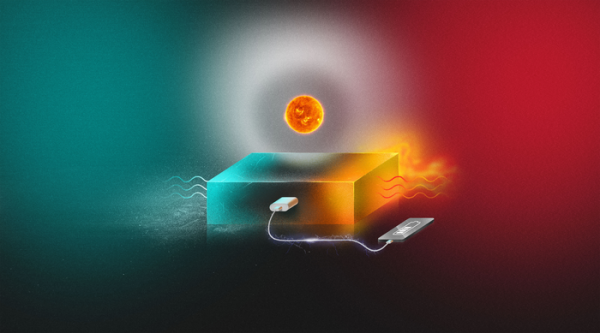The researchers behind an energy system that makes it possible to capture solar energy, store it for up to eighteen years and release it when and where it is needed have now taken the system a step further. After previously demonstrating how the energy can be extracted as heat, they have now succeeded in getting the system to produce electricity, by connecting it to a thermoelectric generator. Eventually, the research – developed at Chalmers University of Technology, Sweden – could lead to self-charging electronics using stored solar energy on demand.
“This is a radically new way of generating electricity from solar energy. It means that we can use solar energy to produce electricity regardless of weather, time of day, season, or geographical location. It is a closed system that can operate without causing carbon dioxide emissions,” says research leader Kasper Moth-Poulsen, Professor at the Department of Chemistry and Chemical Engineering at Chalmers.
The new technology is based on the solar energy system MOST – Molecular Solar Thermal Energy Storage Systems, developed at Chalmers University of Technology. Very simply, the technology is based on a specially designed molecule that changes shape when it comes into contact with sunlight. The research has already attracted great interest worldwide when it has been presented at earlier stages.
Read more at Chalmers University of Technology
Image: The researchers behind an energy system that makes it possible to capture solar energy, store it for up to eighteen years and release it when and where it is needed have now taken the system a step further. After previously demonstrating how the energy can be extracted as heat, they have now succeeded in getting the system to produce electricity, by connecting it to a thermoelectric generator. Eventually, the research – developed at Chalmers University of Technology, Sweden – could lead to self-charging electronics using stored solar energy on demand. (Credit: Chalmers University of Technology | Daniel Spacek, neuroncollective.com)


